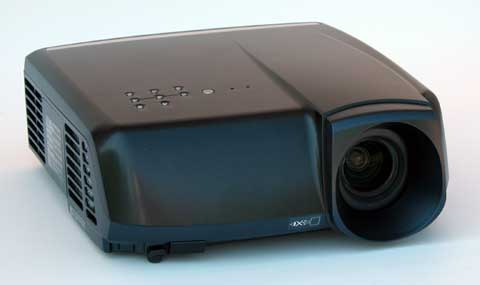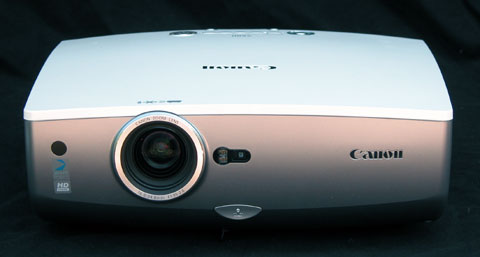Price as reviewed $1688.50 - $2704.17
Design and features
To look at the XD520U, you could be mistaken for thinking it was a slightly under-designed home theatre projector, rather than a business projector. While most business projectors opt for no-nonsense plain styling — presumably because the bean counters won't approve a projector that looks in any way interesting — the XD520U is decked out in white plastic, giving it something of an iPod feeling. Mitsubishi Electric denotes the XD520U as a portable projector, but with dimensions of 332x102x250mm and a carrying weight of 2.9kg, you wouldn't want to have to lug it around too much.
Keeping portability in mind, the XD520U comes with a carrying bag large enough to accommodate the projector, its remote control and connection cables. As projector bags go it's not the thickest we've ever seen, and we can imagine it degrading over time, but as an included extra, it's not too bad.
The remote for the XD520U is a basic affair that cements this projector's status as a boardroom tool. A basic VGA and composite cable is provided, along with a thick multi-lingual safety manual; the product manual is supplied as PDF on CD-ROM.
The AU$2199 XD520U DLP Projector sits at the top end of Mitsubishi Electric's new "Leo" range of DLP business projectors. If your budget is tight, the range also includes the AU$1899 XD510U and AU$1599 XD500U, although you'll take a hit in lamp brightness and lamp life respectively.
For those who hate noisy projectors, it's worth noting that the cheaper XD500U dimmer bulb gives it an average claimed noise rating of 26dBA, compared to the XD520U's 29dBA. On the specifications front, the XD520U claims 3000 ANSI lumens brightness, a contrast ratio of 2000:1 and a lamp capable of running at up to 280W. Resolution tops out at 1024x768. As you'd expect for a lower-cost projector, both focus and zoom are manual affairs.
Inputs are functional, with 2 D-Sub connectors, 1 composite and 1 S-Video connector, along with 1 RCA Audio and one 3.5mm stereo input. There's also a single D-Sub output port, and another 3.5mm output audio jack.
The XD520U utilises a six-colour wheel for -- so Mitsubishi claims -- enhanced colour accuracy. For those interested, the two additional colours are yellow and cyan. The bulb on the XD520U is rated for 3000 hours operation in economy mode, or a more sedate 2000 hours in standard mode.
Setting up the XD520U was particularly easy, with a single pop-out front leg for basic angle adjustment. Focus and zoom are handled from the physical front wheels, which feel moderately sturdy.
Verdict
We tested the XD520U with a variety of material and across all of its input sources &mdahs; although with a unit with this few inputs, that's not a difficult task. Calibrating and testing with DisplayMate Multimedia Edition showed good onscreen geometry but a very slight tendency to wash colours out at the lighter end of the spectrum. That's less likely to be a concern for a projector showing static slides, but if you do require the use of embedded video, you might find it a little more noticeable.
Speaking of things you'll find noticeable, the 29dBA output of the fans on the projector are certainly not the most circumspect of critters. Loud, in other words, and for some of our test material that included sound, often nearly as loud as the XD520U's inbuilt and undeniably tinny speakers.
The XD520U's unremarkably remote worked well. Replacement bulbs cost $549 each, which works out at 27.45c/hour in standard mode, or 18.3c/hour if you can get by in economy mode.
The XD520U isn't a stunning system, and it's priced accordingly; while it's possible to get cheaper business projectors with essentially the same raw specifications, many of those do suffer more than the XD520U when it comes to absolute colour precision. At the same time, many other units aren't quite so noisy.
Connections
* Composite
* Yes
* S-Video
* Yes
* DVI
* Yes
* VGA
* Yes
Display
* Screen resolution
* 1024 x 768 pixels
* Mininum projection size - Diagonal
* 1016 mm
* Maximum projection size - Diagonal
* 7620 mm
General
* Dimensions (H x W x D)
* 102 x 332 x 250 mm
* Weight
* 2.9 kg
Image
* Aspect ratio
* 4:3
Lamp
* Lamp brightness
* 3000 cd/m2
Projectors
* Projector system
* DLP
Sound
* Noise level
* 29 dB
* Speakers
* Yes



































